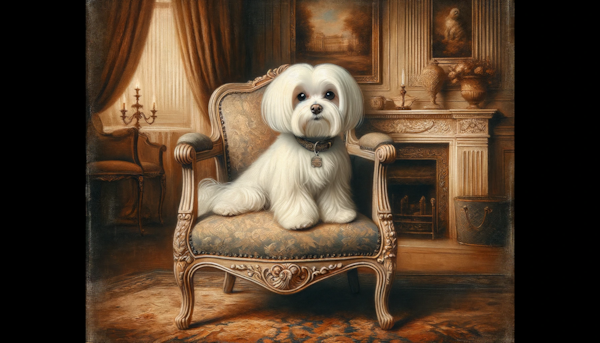
The Maltese dog is one of the oldest and most cherished toy breeds in the world. This elegant little dog has a rich history that spans thousands of years, earning its place as a beloved companion to aristocrats, royals, and dog lovers across various civilizations. Renowned for its charming appearance and affectionate nature, the Maltese has been a symbol of luxury and refinement throughout the ages.
From its origins in the Mediterranean basin to its revered status in ancient Greek and Roman societies, the Maltese has captivated humans with its beauty for centuries. This article explores the fascinating history and origins of the Maltese dog, tracing its path from ancient times to the modern day.
Table of Contents
The Maltese’s Ancient Beginnings
Origins on Malta

The Maltese dog's history is deeply intertwined with the Mediterranean island of Malta. Malta, situated 60 miles south of Sicily, was a vital hub in ancient times, serving as a crossroads for traders, mariners, and pilgrims from across Europe, Africa, and Asia. The island’s strategic location made it a melting pot of cultures and influences, which is reflected in the diverse theories about the Maltese dog’s origins.
The Maltese is a distinguished member of the Bichon family, a group of small, white, and fluffy dogs that are celebrated worldwide for their happy-go-lucky personalities and elegant appearances. This family includes other charming breeds such as the Bichon Frise, Havanese, and Bolognese. Like the Maltese, these breeds were cherished by European aristocracy and often found in the courts of royalty. The Bichon breeds share a common ancestry, with the Maltese often considered one of the most ancient and beloved.
Historians believe that the Maltese breed was introduced to Malta by the Phoenicians, ancient mariners who dominated the Mediterranean trade routes before the rise of Greece. The Phoenicians brought with them small, white lapdogs that became the ancestors of the modern Maltese. Over centuries, these dogs adapted to the local environment and became a distinct breed.
Early Mentions and Artifacts
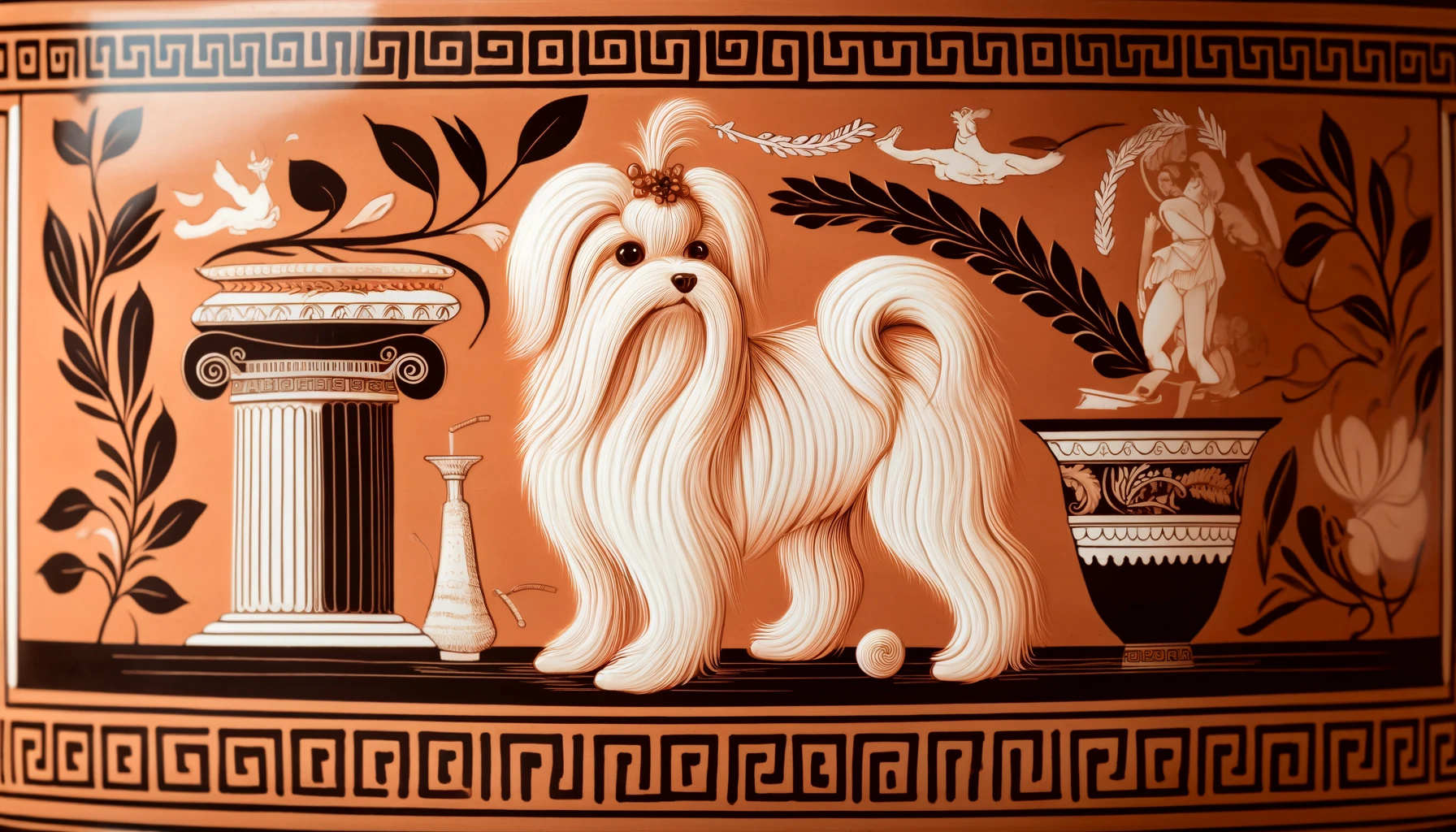
The Maltese is one of the oldest toy breeds, with a lineage that dates back at least 2,000 years. References to small, white dogs resembling the Maltese appear in ancient Greek and Roman texts and artworks. Aristotle, the renowned Greek philosopher, mentioned a small, beloved dog in his writings from 370 B.C., which many scholars believe to have been a Maltese.
Artifacts from ancient Greece and Rome, such as ceramics and frescoes, often depict Maltese-like dogs. These small dogs were admired for their beauty and elegance, often appearing alongside their noble owners in art and literature. Their frequent depiction in high-status contexts suggests that the Maltese dogs were a prized possession among the elite.
Maltese Names Through Time
Throughout its history, the Maltese has been known by various names, which reflects the breed’s widespread historical appeal and adaptation to different cultures. Names like “Melitaie Dog,” “Ye Ancient Dogge of Malta,” and the “Roman Ladies’ Dog” highlights its presence across different epochs and societies.
By the Middle Ages, the Maltese had spread throughout Europe, gaining particular popularity among French aristocrats and British royalty. Crossbreeding with other toy breeds during this period further refined the Maltese's appearance and temperament, shaping the breed we know today.
The Maltese’s Evolution Through the Ages
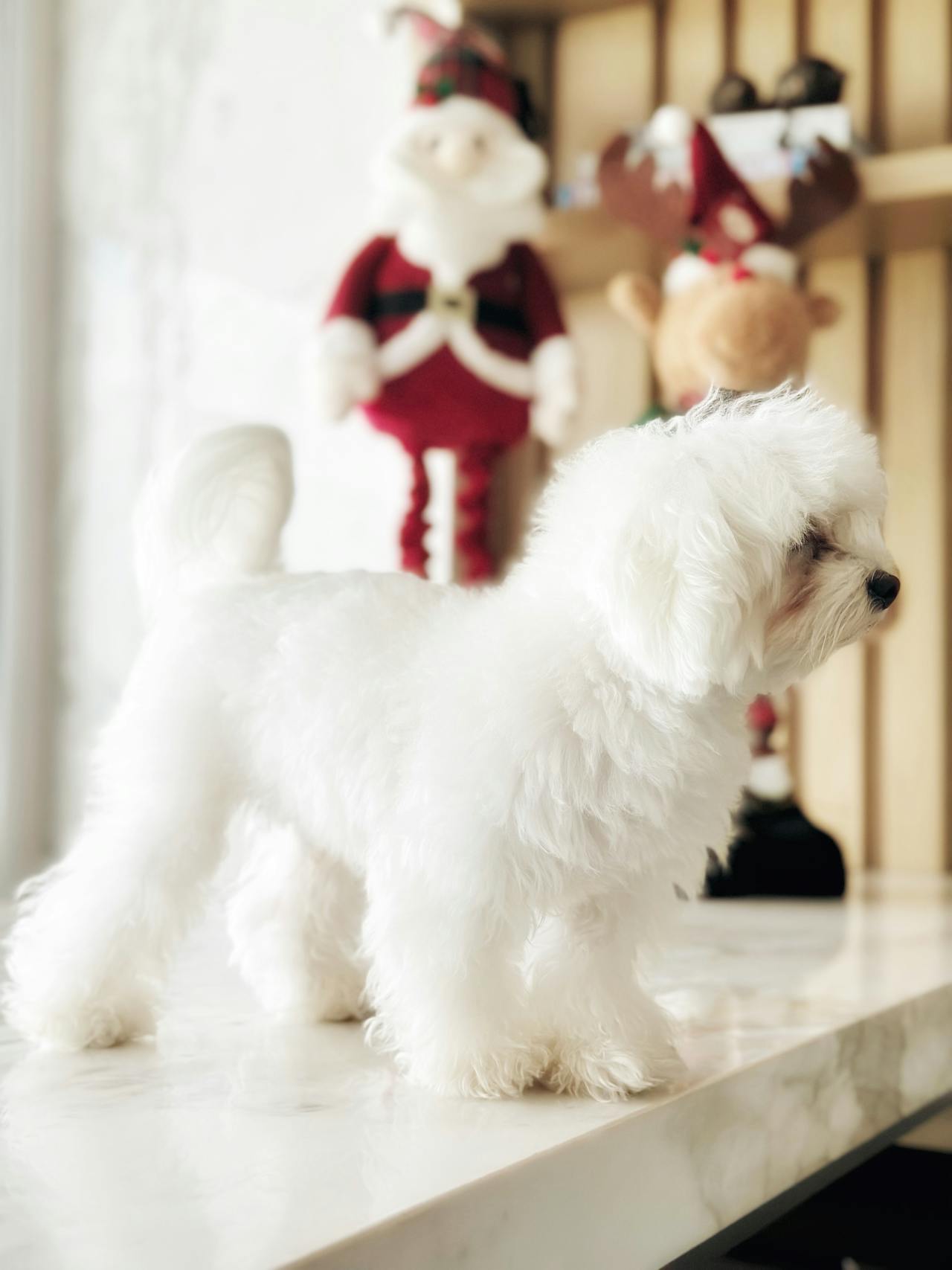
Role in Roman Society
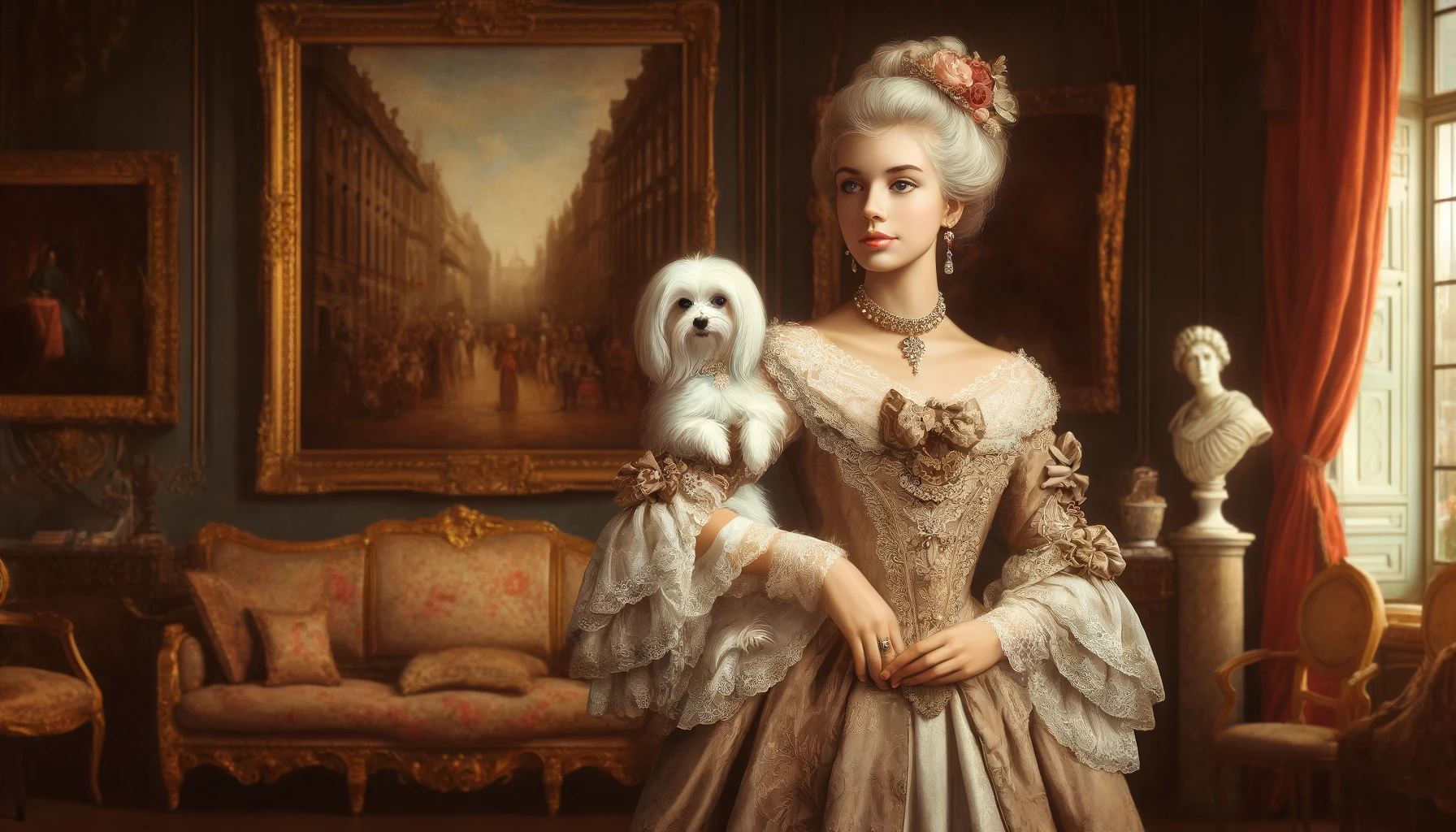
The Maltese dog played a significant role in Roman society, where it was highly prized among the nobility. Known as the "Roman Ladies' Dog," the Maltese was often seen in the company of aristocratic women, symbolizing status and elegance. Roman literature and art frequently depicted these small, white dogs, highlighting their importance as both companions and fashion statements. The Maltese's popularity in Rome can be traced back to its association with loyalty and affection, qualities that endeared it to many prominent figures, including Emperor Claudius.
One of the most enduring legends involves Saint Paul, who was shipwrecked on Malta. According to the Acts of the Apostles, Paul miraculously healed the father of the island’s Roman governor, Publius. In gratitude, Publius is said to have presented Paul with a Maltese.
Middle Ages to Renaissance
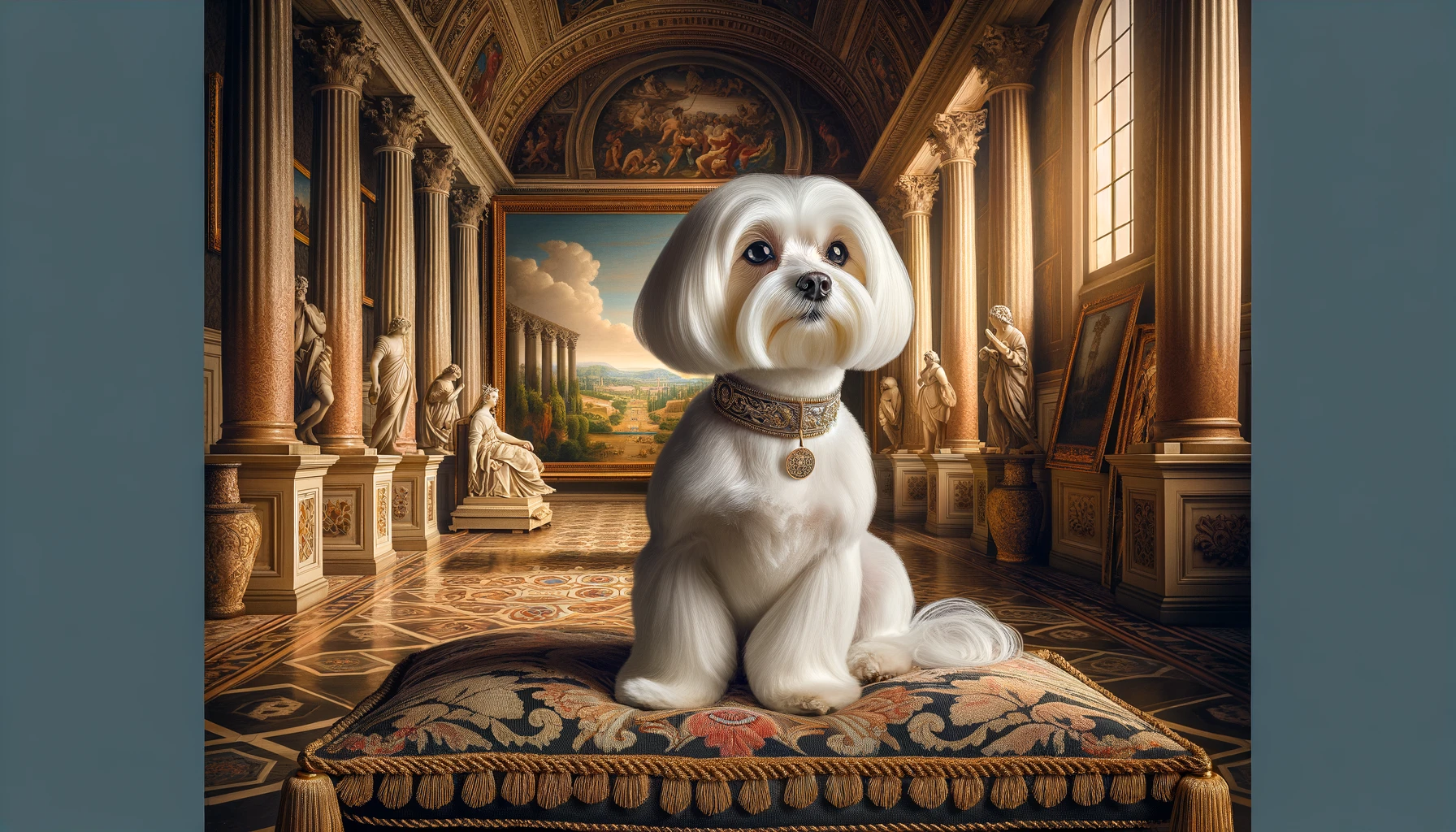
During the Middle Ages, the Maltese dog continued to be a symbol of refinement and luxury. Its popularity spread throughout Europe, particularly among French and British aristocracy. The breed was often depicted in medieval art, symbolizing purity and nobility.
In the Renaissance period, the Maltese gained even greater prominence. Artists such as Titian and Goya featured the breed in their works, often portraying them alongside noblewomen. These depictions reinforced the Maltese's association with wealth and high social standing. The breed's distinctive long, white coat and compact size were consistently celebrated in these artistic representations.
Influence of Crossbreeding
Throughout its history, the Maltese has been influenced by crossbreeding with other toy breeds, which helped refine its characteristics and enhance its appeal. By the 19th century, breeders in Europe and America sought to standardize the breed, focusing on its distinctive appearance and gentle temperament. This period saw the Maltese being bred to emphasize its small size, silky white coat, and lively personality, traits that remain defining features of the breed today.
Cultural Significance and Symbolism

Association with Royalty
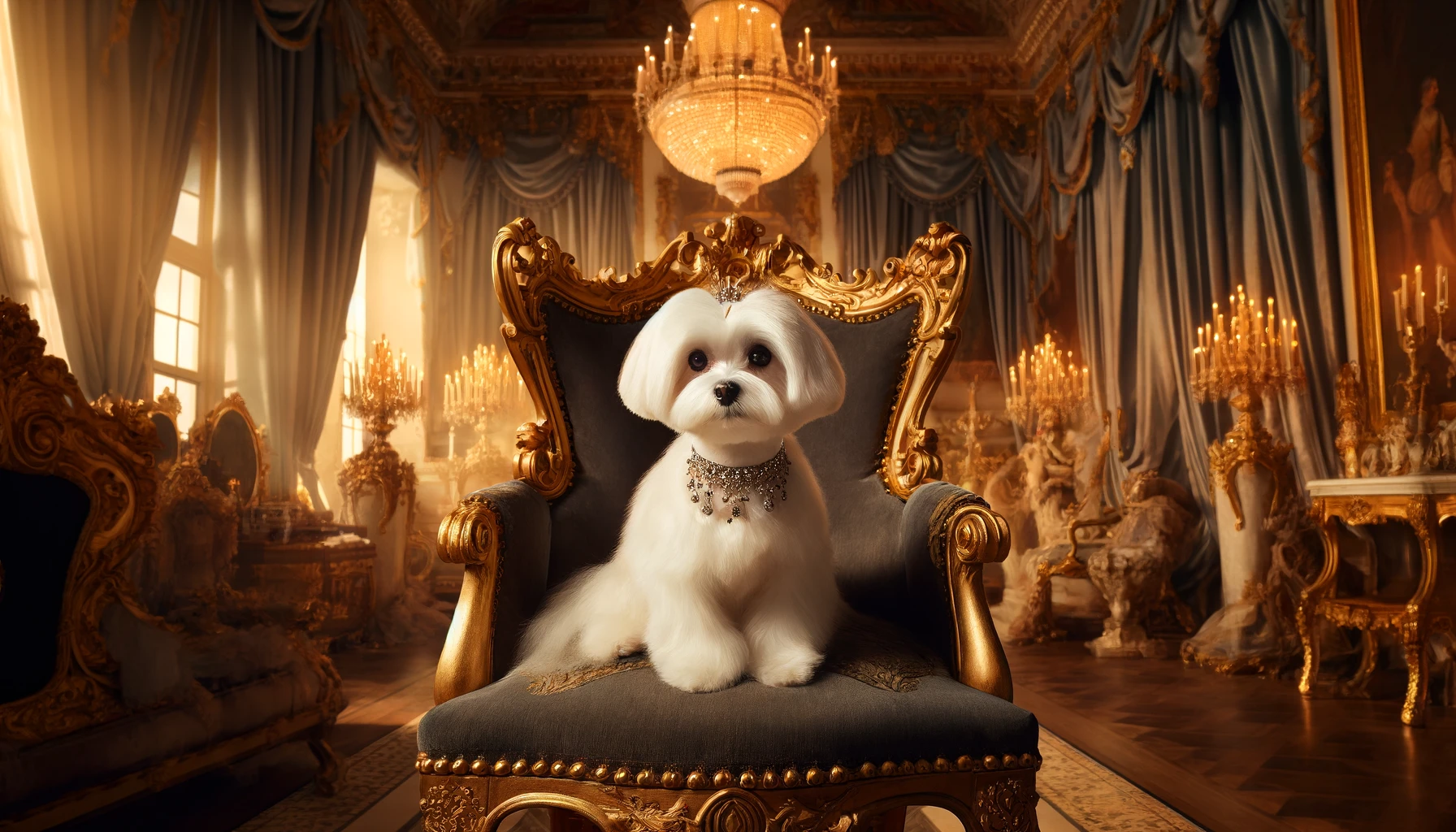
Throughout history, the Maltese dog has been a symbol of luxury and refinement, closely associated with royalty and the aristocracy. These elegant dogs were highly prized by European nobles and royals, such as Queen Elizabeth I and Mary Queen of Scots, who were known to keep Maltese as cherished companions. The breed's popularity among the elite was not merely due to its appearance but also its demeanor and gentle nature. The breed was seen as the perfect lapdog for the high-born.
Maltese dogs were often gifted among royalty and nobility, which enhanced their status as living symbols of wealth and sophistication. Their presence in royal courts and among the elite helped cement their reputation as a breed of distinction.
Symbolic Significance in Ancient Cultures
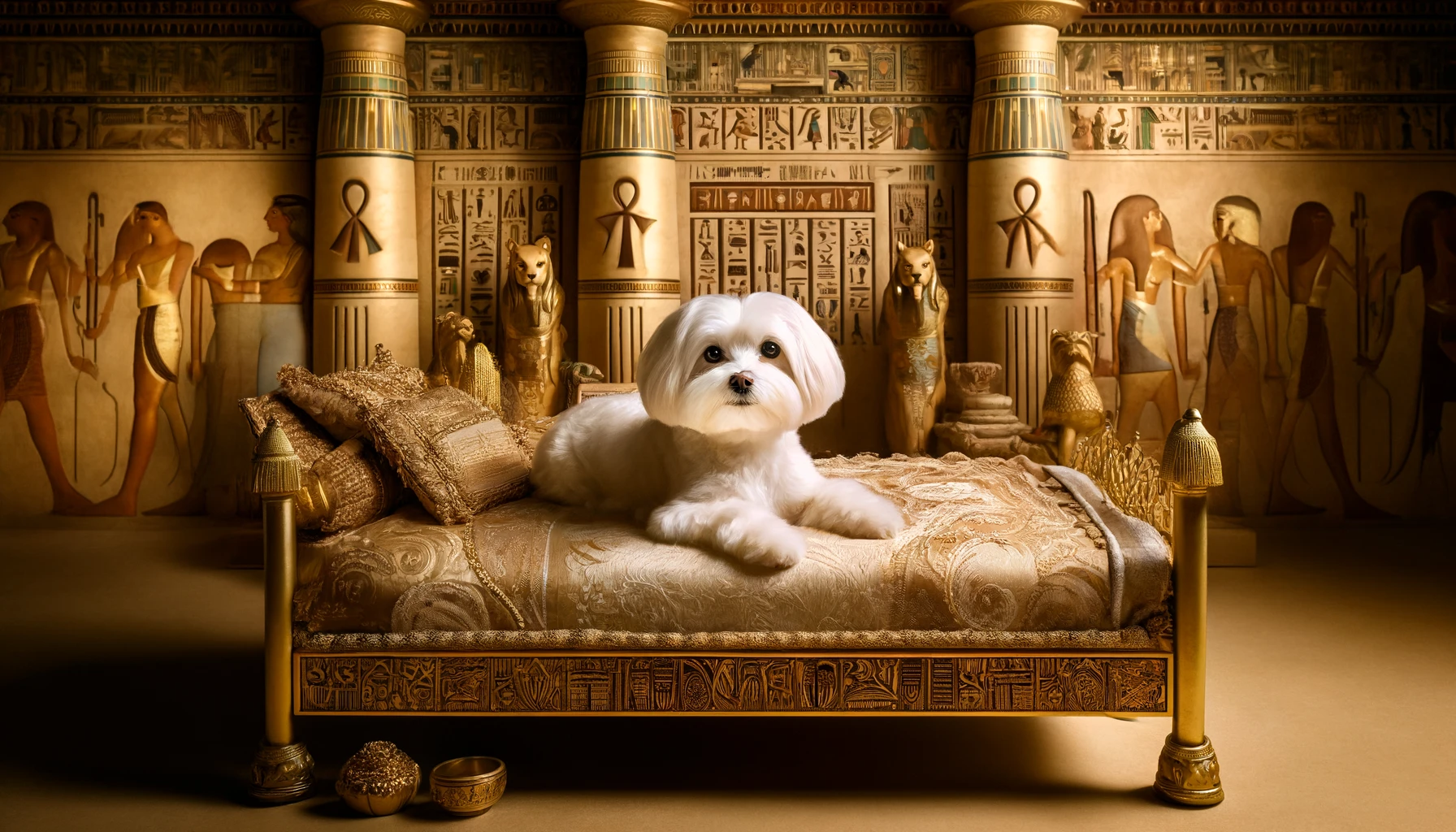
The cultural significance of the Maltese extends beyond European courts. In ancient Egypt, the Maltese was believed to possess healing powers. Egyptians would place a Maltese puppy in the bed of someone who was ill, believing that the dog could help restore the person's health.
In Greek and Roman societies, the Maltese was similarly revered. Aristotle, the Greek philosopher, mentioned a small, beautiful dog, which many believe was a Maltese, describing it as a prized possession among the elite. Roman aristocrats valued the Maltese for its loyalty and affectionate nature, often keeping them as lapdogs and symbols of status.
Representation in Art and Literature
The Maltese has been a prominent figure in art and literature for centuries. It was often depicted as a symbol of purity, loyalty, and elegance. During the Renaissance, artists often included Maltese dogs in their works, portraying them as companions to noblewomen and signifying their owners' high social standing.
In literature, the Maltese has been depicted as a symbol of grace and fidelity. Historical texts frequently highlight the breed's gentle nature and its role as a cherished companion.
The Maltese in Modern Culture
Today, the Maltese continues to be celebrated in modern culture, maintaining its status as a symbol of elegance and charm. The breed is popular not only for its beauty but also for its intelligence and affectionate personality. Maltese dogs often participate in dog shows, where their grooming and training are showcased to great effect.
Modern Development and Popularity
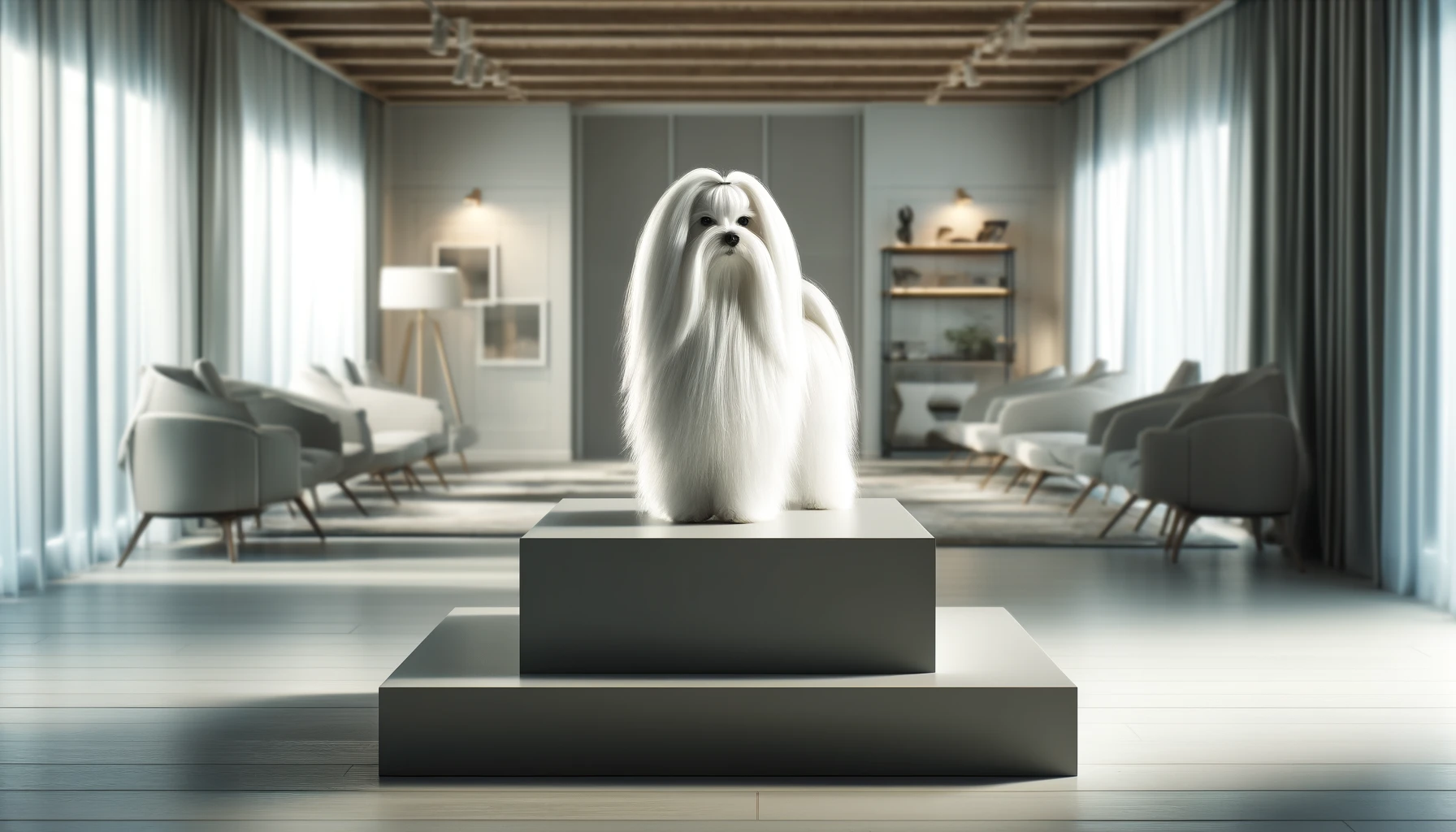
Refinement of the Breed
The modern Maltese dog has undergone significant refinement through selective breeding practices, particularly in the 19th and 20th centuries. Breeders focused on enhancing the breed's distinctive traits, such as its small size, silky white coat, and lively personality. This process involved careful crossbreeding with other toy breeds to establish and maintain the Maltese's unique characteristics.
One of the primary goals of these breeding programs was to standardize the breed’s appearance. Emphasis was placed on the Maltese's long, flowing coat, which became a hallmark of the breed. Additionally, breeders worked to refine the breed’s temperament, ensuring that Maltese dogs retained their affectionate and playful nature while being well-suited for companionship.
Recognition by Kennel Clubs
The formal recognition of the Maltese by major kennel clubs further solidified its status and popularity. The American Kennel Club (AKC) recognized the Maltese in 1888, and the breed quickly became a favorite in dog shows and competitions. The AKC established breed standards that highlighted the Maltese's distinctive features, including its pure white coat, compact size, and elegant demeanor.
Other kennel clubs around the world, such as the United Kennel Club (UKC) and the Kennel Club in the United Kingdom, also recognized the Maltese and reserved similar breed standards. These standards have played a crucial role in maintaining the breed’s consistency and quality, ensuring that Maltese dogs meet specific criteria for appearance and behavior.
Continued Popularity and Role in Dog Shows

The Maltese's refined appearance and charming personality have made it a standout in dog shows and competitions. The breed's graceful movement and elegant coat often attract attention in the show ring, where Maltese dogs are judged on their conformity to breed standards, grooming, and overall presentation. Their success in these events has helped to maintain and even enhance the breed’s popularity.
In addition to their prominence in dog shows, Maltese dogs are frequently seen in various roles that highlight their versatility and intelligence. They excel in obedience and agility competitions, where they demonstrate their quick learning abilities and eagerness to please.
The Maltese as a Modern Companion
Today, the Maltese continues to be a beloved companion dog, cherished for its affectionate nature and adaptability. The breed’s small size and minimal exercise requirements make it well-suited for various living environments, including apartments and urban settings. Despite their size, Maltese dogs are known for their lively and playful demeanor.
The breed's luxurious coat, although requiring regular grooming, adds to its appeal. Many owners enjoy the grooming process as a way to bond with their pets, while also ensuring that their Maltese remains healthy and well-maintained. Additionally, the Maltese’s hypoallergenic coat makes it a suitable choice for individuals with allergies, further broadening its appeal.
The Maltese Today
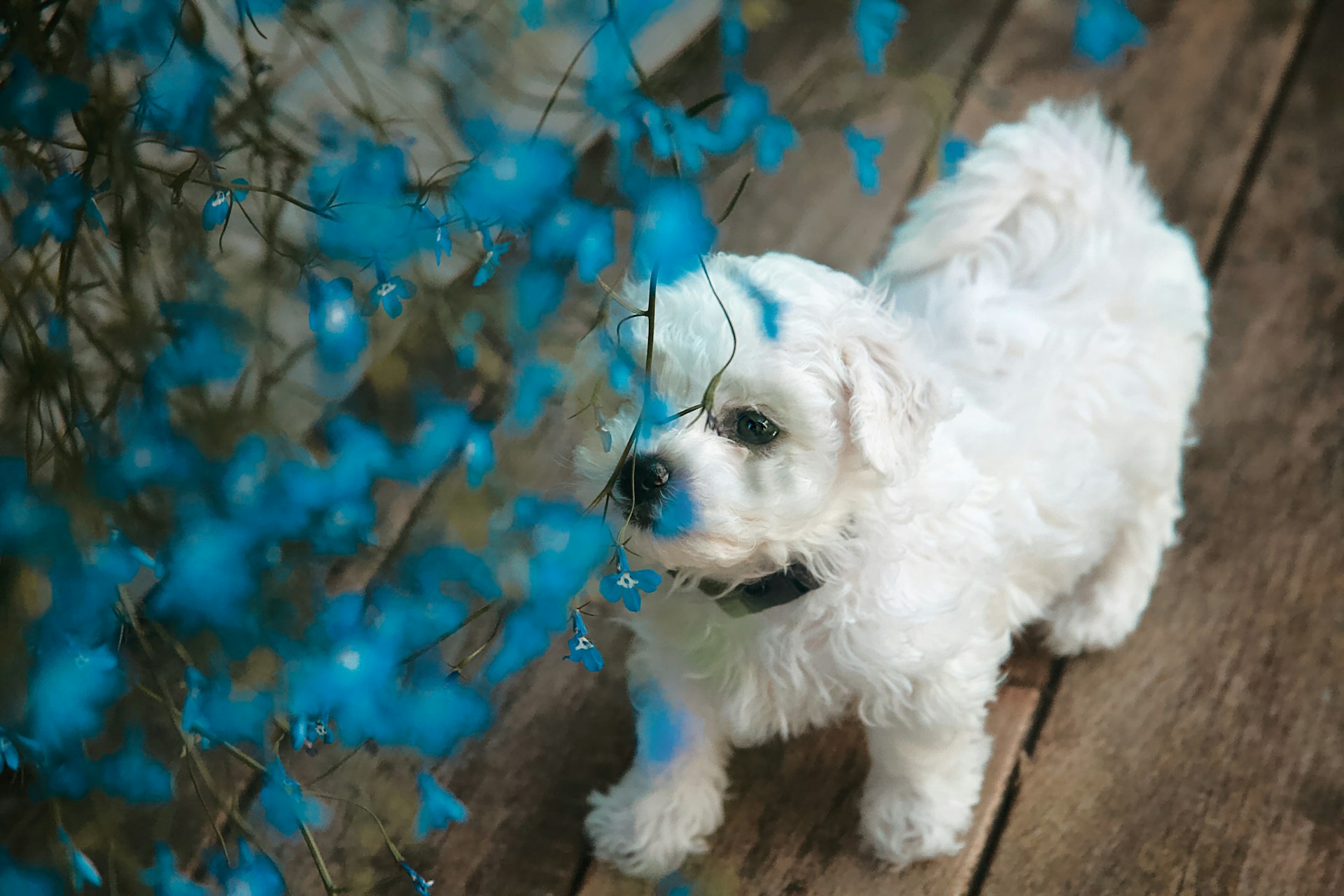
Presence in Dog Shows
The Maltese dog has a prominent presence in dog shows around the world, where it is celebrated for its elegance, grace, and impeccable grooming. The breed's stunning appearance, characterized by its long, flowing white coat, makes it a favorite in conformation events. At prestigious shows such as the Westminster Kennel Club Dog Show, the Maltese frequently draws attention and accolades.
Judges in dog shows evaluate Maltese dogs based on criteria such as coat quality, movement, and overall presentation. The breed’s ability to maintain its coat in pristine condition while displaying an energetic and confident demeanor contributes to its success in the ring. This high level of grooming and presentation often involves significant effort from dedicated owners and professional handlers.
On Television and in Media

The Maltese has also made a significant impact on television and in media. Their charming appearance and affectionate nature make them ideal candidates for roles in commercials, movies, and TV shows. Maltese dogs have been featured in various advertisements, promoting pet products and luxury items, leveraging their image as a symbol of elegance and sophistication.
In film and television, the Maltese often appears as a pampered pet of wealthy characters, further cementing its association with luxury and high society. The breed's gentle temperament and trainability make it a natural choice for on-screen roles.
Social Media Popularity

In the age of social media, the Maltese has found a new platform to shine on. Many Maltese dogs have become social media stars, with dedicated accounts showcasing their daily lives, grooming routines, and playful antics. Platforms like Instagram and TikTok feature numerous Maltese dogs with substantial followings, where they charm audiences with their adorable looks and endearing personalities.
The breed’s photogenic nature and expressiveness make it particularly well-suited for the visual medium of social media.
Worldwide Popularity
The Maltese’s global appeal continues to grow, with the breed being a favorite among dog lovers worldwide. Its adaptability, intelligence, and affectionate nature make it an ideal companion for people of all ages and lifestyles.
In addition to its popularity in Western countries, the Maltese is also beloved in Asia, particularly in countries like Japan and South Korea, where the breed is admired for its small size and charming demeanor.
Conclusion
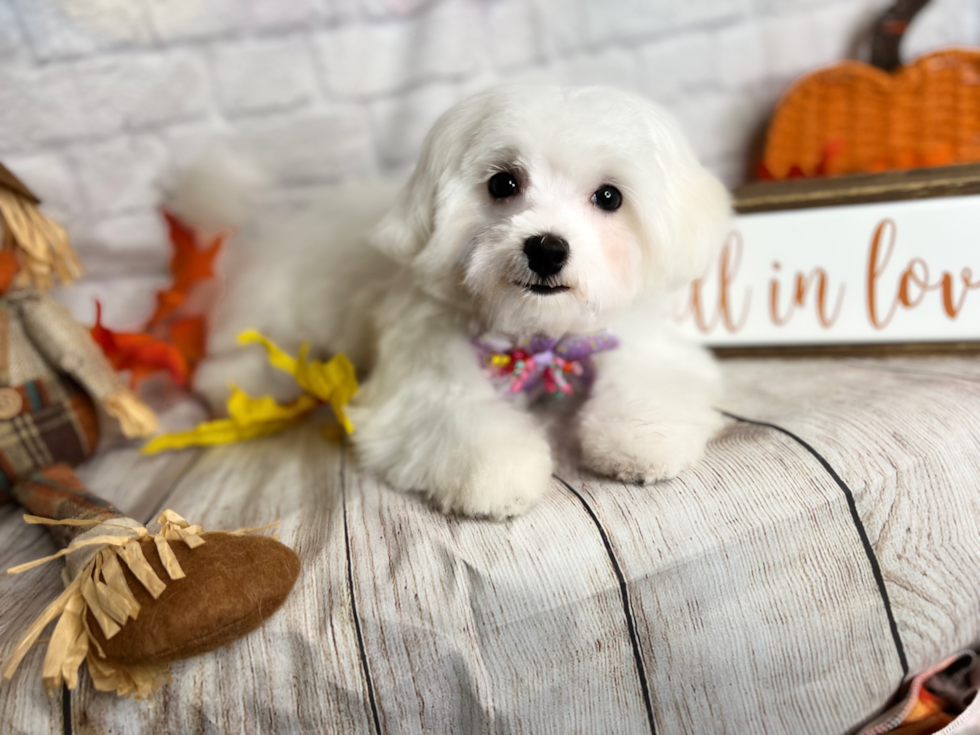
The Maltese dog continues to be one of the most beloved and iconic toy breeds in the world. From its ancient origins on the island of Malta to its prestigious role in Roman society, the Maltese has always been a symbol of elegance and refinement. Its association with royalty and its depiction in art and literature have cemented its status as a dog of distinction across various cultures and epochs.
The breed's journey through the ages—from being a prized companion in ancient civilizations to its prominence in dog shows and modern media—highlights its remarkable adaptability and lasting appeal. The Maltese remains a favorite in conformation events, where it is celebrated for its beauty, grace, and impeccable grooming. Its presence in television, movies, and social media highlights its continued relevance and popularity in contemporary culture.
Scroll down to see FAQs about the Maltese's History.
What To Read Next
15 Best Dog Breeds for First-Time Owners
7 Best Apartment Dog Breeds
Frequently Asked Questions
Where did the Maltese dog originate? The Maltese dog originated on the Mediterranean island of Malta. Historical evidence suggests that the breed has been present there for over 2,000 years, introduced by ancient mariners such as the Phoenicians.
Why are Maltese dogs associated with royalty? Maltese dogs have been favored by European aristocracy and royalty for centuries. Their elegant appearance and gentle nature made them popular among noblewomen, and they were often kept as lapdogs and symbols of luxury. Notable historical figures such as Queen Elizabeth I and Mary Queen of Scots owned Maltese dogs.
What roles did Maltese dogs play in ancient cultures? In ancient cultures, Maltese dogs were not only companions but also held symbolic significance. In ancient Egypt, they were believed to possess healing powers, while in Roman society, they were symbols of loyalty and affection, often appearing in myths and fables.




